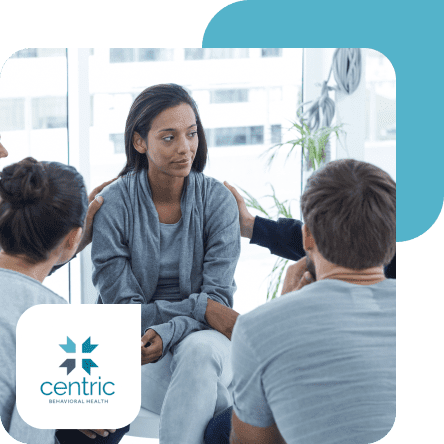Addiction and Polydrug Use
Mixing multiple substances is called “polydrug use” or “polysubstance use.” Polydrug users will often combine different substances to achieve specific effects. For instance, a drug user may combine a stimulant like cocaine with alcohol abuse to counteract the drowsy effects of drinking. Mixing multiple illicit drugs can be incredibly dangerous.
According to a study by the University of Michigan, different combinations of drugs can lead to unpredictable reactions and adverse effects, including addiction, risk of overdose, and even death.
Battling addiction and ready for treatment?
What is Polydrug Use?
Polydrug use, also known as polysubstance use, describes when a person takes multiple substances (either together or one after the other) for recreational purposes. These combinations can include alcohol, prescription drugs, and/or illicit drugs.
A typical example of polysubstance use is taking a pill (whether prescribed, recreational, or over-the-counter) and washing it down with a beer or another alcoholic beverage.
Some other common forms of polydrug use include:
- Mixing drugs, such as lacing one drug with another
- Using multiple substances to amplify their effects
- Using one substance to counter the effects of another substance
- Using a different substance when the substance you want is no longer available
While polydrug use was at one time considered its diagnosis in the Diagnostic and Statistical Manual of Mental Disorders (DSM-5), it now falls under the substance use disorder category.
Understanding Substance Use Disorder
Substance use disorder is another term for addiction. Someone suffering from a substance use disorder can’t function properly without having said substances in their system. They also continue to use and abuse this substance even when it negatively affects their health, relationships, finances, or legal standing.
Someone suffering from a substance use disorder might branch out and turn to other substances to find new ways of achieving their desired effect. Their addiction to a specific substance might be so great that they must mix in something else to get the “high” they want.
Polysubstance Addiction
When someone takes multiple substances either at once or concurrently, they increase the risk of becoming addicted to all the substances they are taking. Since addiction changes the overall chemistry of the brain, once the brain determines that it needs multiple substances, it will crave them.
People suffering from polysubstance addiction might experience their cravings for each drug differently. For example, some people crave nicotine only when drinking alcohol.
A consequence of polysubstance addiction is the increased risk of significant health issues. Each substance has its own side effects, and mixing multiple substances can adversely affect the body, resulting in potentially deadly health problems.
Dangers of Polydrug Use
Mixing different types of drugs can not only increase the chances of the development of an addiction, but it can also cause serious physical and mental health complications.
Some of the reasons why a person might decide to mix substances include the following:
- To counter the effects of another substance
- To enhance the “high”
- When their substance of choice is not available
- When they are already under the influence of one substance and take another without thinking about it
What are the Risks of Combining Drugs?
Whether it’s something that is medically prescribed, purchased over the counter, or obtained illegally, all substances have side effects. Mixing substances can be dangerous and lead to significant mental and physical ailments.
Some of the side effects associated with polysubstance use and abuse include:
- Depression
- Anxiety
- Hallucinations
- Brain damage
- Organ failure
- Stroke
- Heart attack
- Rapid or slow heart rate
- Breathing issues
- Loss of consciousness
- Respiratory failure
- Uncontrollable muscle spasms
- Memory loss
- Fatal overdose
Opioid overdose is becoming a bigger concern, as many drug users are unaware that opioids (like fentanyl) have been added to their other illicit drugs. Cocaine, MDMA, and crystal meth are among the most common drugs often laced with opiates—in many cases, unbeknownst to the user.
What Drugs are Commonly Combined?
While mixing any combination of substances is considered polysubstance abuse, certain mixtures are more common than others. Stimulants, depressants, over-the-counter and prescription medications, and alcohol are all substances that people commonly combine.
Some combinations have achieved notoriety in pop culture, appearing in songs, movies, etc., due to their popularity in the club-going and polydrug use scenes. One popular combination, for example, is known as a “speedball,” which combines heroin and cocaine.
Mixing Stimulants
Stimulants (such as cocaine, methamphetamines, or ecstasy/MDMA) can lead to increased heart rate and blood pressure, often to dangerous levels. Mixing stimulants can lead to:
- Heart attack
- Stroke
- Liver damage
- Brain damage
- Seizures
- Nausea
- Vomiting
- Chest pain
- Increased body temperature
- Psychosis
- Anxiety
- Panic attacks
Mixing Depressants
Depressants (like cannabis, alcohol, or opiates) slow down the body and the brain and reduce a person’s breathing. Mixing depressants can slow the central nervous system down to dangerous levels, which can lead to:
- Brain damage
- Organ damage and failure
- Unconsciousness
- Weak pulse
- Altered mental state
- Confusion
- Increased risk of injury
- Impaired judgment
- Lack of coordination
- Vomiting
- Memory loss
- Irregular breathing
Mixing Stimulants and Depressants
While some people might think that mixing stimulants and depressants might counter one or the other or even cancel each other out, that is not the case. Combining the two can put extra stress on the body and potentially lead to overdose and death.
The additional strain that combining stimulants and depressants place on the body can lead to major medical complications such as:
- Respiratory issues, including infections
- Heart problems
- Kidney failure
- Dehydration
- Overheating
Mixing Medications
Whether it’s an over-the-counter or prescription medication, there are often warnings and instructions not to mix certain medicines with other substances.
Mixing medications can lead to an increased risk of the following issues:
- Breathing issues
- Drowsiness
- Lack of coordination
- Overdose
Mixing Drugs and Alcohol
Alcohol is a depressant and shares many similar effects that depressant drugs do. As a result, mixing drugs with alcohol can lead to the following issues:
- Drowsiness
- Lightheadedness
- Difficulty concentrating
- Inability to perform basic tasks
- Increased risk of injury
- Liver damage
- Seizures
- Compromised immune system
Polydrug Use in Young People
When it comes to experimenting with drug use, including mixing substances, teens and young adults do so at a higher rate than any other age demographic. A study by the RAND Research Institute in Los Angeles found that 29% of California high school seniors engaged in polydrug use in the past 12 months.
The same study found that the main contributing factors for polysubstance use in adolescents are:
- Peer pressure
- Pro-drug environment
- Rebelliousness
- Family issues
Additionally, teenage boys are far more likely to engage in polydrug use than teen girls.
According to the National Institute on Drug Abuse (NIDA), polydrug use is also common in the “club scene,” which became popularized in the 1990s at raves and similar settings. Polydrug use among club attendees typically involves some combination of psychoactive substances, the most popular being:
- Alcohol
- MDMA (ecstasy)
- Cocaine
- Ketamine
- Crystal meth
- LSD (acid)
- GHB
Polydrug Use Statistics
According to a June 2020 study, 35 million people in the U.S. meet the criteria for a substance use disorder.
- Of the 35 million people who qualified for a substance use disorder, roughly 11% also had a polydrug use disorder involving alcohol
- According to the CDC, in 2019, 50% of all drug overdose deaths involved more than one drug
- Alcohol is the most common substance involved with polysubstance use
- According to a 2014 SAMHSA report, nearly 1 million ER visits from 2005-2011 involved a combination of benzodiazepines and another illicit substance
Getting Help for Polydrug Abuse
When not appropriately addressed, polysubstance abuse and addiction can be deadly. If you or a loved one is struggling with polydrug abuse and addiction, medical intervention is usually necessary to help you achieve sobriety and regain control of your life.
Medical Detox for Polydrug use
As with any substance of abuse, the first step in the treatment process is to undergo detox treatment. Detoxing rids the body of harmful substances so that the body and brain can begin healing.
Due to the nature of detoxing and the withdrawal symptoms associated with detox, the detox process should occur under the care and supervision of trained medical professionals. In many cases, an individual can still go through a supervised detox at the outpatient level but will still benefit from the overall supervision of a medical professional.
Self-detox can be dangerous and even life-threatening and should not occur without speaking to a doctor or healthcare professional first.
Addiction Treatment Programs
Once detox has been completed, the next step is to enter into a substance abuse treatment program. Based on your needs and the advice of your treatment professional, you will likely do either inpatient or outpatient treatment.
Treatment for polydrug use and addiction focuses most on psychotherapy, especially styles like Cognitive Behavioral Therapy. Psychotherapy helps identify the initial cause or causes of the development of the addiction and teaches better ways to deal with triggers going forward that don’t involve drugs or alcohol.
Medication-assisted treatment might also be used depending on the severity of the addiction and the substances used. Certain medications can help with withdrawal symptoms, especially during detox, including buprenorphine, methadone, and naltrexone.
Support Groups
Support groups can provide a robust support system that many in recovery need during and after treatment.
Peer-based recovery groups such as Alcoholics Anonymous, Narcotics Anonymous, and SMART Recovery are all designed to provide a safe and supportive environment for those in recovery.
Find Help for an Addiction
Whether you are struggling with one or multiple substances, remember that treatment options are available. Call the SAMHSA helpline at 1-800-662-4357 or visit their online program locator to find polydrug treatment options in your area.
Centric Behavioral Health, our paid treatment center sponsor, is available 24/7:
Learn More About Centric or For Immediate Treatment Help, Call (888) 694-1249.
Frequently Asked Questions About Polydrug Use
What is polysubstance abuse?
Polysubstance abuse occurs when a person takes multiple substances, either legal, illegal, or both, together or during a finite period.
What are the dangers of polydrug use?
Drugs and alcohol come with their own set of side effects and possible medical issues. Combining multiple substances can lead to serious medical problems, including:
- Depression
- Anxiety
- Stroke
- Brain damage
- Organ failure
- Heart attack
- Breathing issues
- Respiratory failure
- Memory loss
- Fatal overdose
What are the three most common types of polysubstance abuse?
The most common combinations of polysubstance abuse are:
- Mixing stimulants
- Mixing depressants
- Mixing stimulants and depressants
What are some examples of polydrug use?
Anytime more than one illicit substance is taken together or in a finite period, it is considered polydrug use.
Some common examples of polydrug use include:
- Cocaine and ecstasy
- Cocaine and alcohol
- Opioids and benzodiazepines
- Prescription and illegal drugs
- Benzodiazepines and alcohol
- Speed and alcohol
- Opioids and alcohol
Can you combine drugs?
You should not combine drugs of any kind, even if purchased over the counter, without speaking to a doctor or pharmacist first. Different drug interactions can be dangerous or fatal when combined with other drugs. A doctor or pharmacist will help make sure any combination is safe before you proceed.
Can someone be addicted to more than one drug?
Yes, it is possible to be addicted to more than one drug simultaneously. Furthermore, certain drug addictions can be triggered when taking another substance. For example, someone might suffer from alcohol addiction, but it only gets triggered after they use cocaine.

